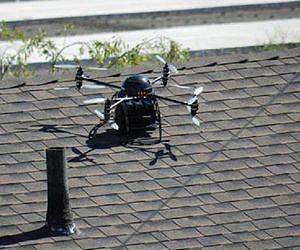
TiaLinx has announced the launch of the Phoenix50-H. The quad coaxial mini-copter system is capable of performing multiple functions such as detecting movement or breathing of a hiding person in a compound from a sloped roof. The mini-copter can be remotely controlled at extended standoff distances of more than multiples of 100 feet from ground or an airborne asset to keep the operators out of harm's way.The lightweight and agile mini-copter with programmability to fly to or land at multiple waypoints has been integrated with TiaLinx's fine beam ultra-wideband (UWB), multi-Gigahertz radio frequency (RF) sensor array.An onboard microphone and video camera augment the sensor capability of Phoenix50-H. TiaLinx's advanced real-time and light weight UWB RF imaging system was an essential step in the development of Phoenix50-H to operate at high elevations for prolonged missions. The transmitted power of the UWB signal is less than a typical cellular phone.Read all about it in Space War online.





